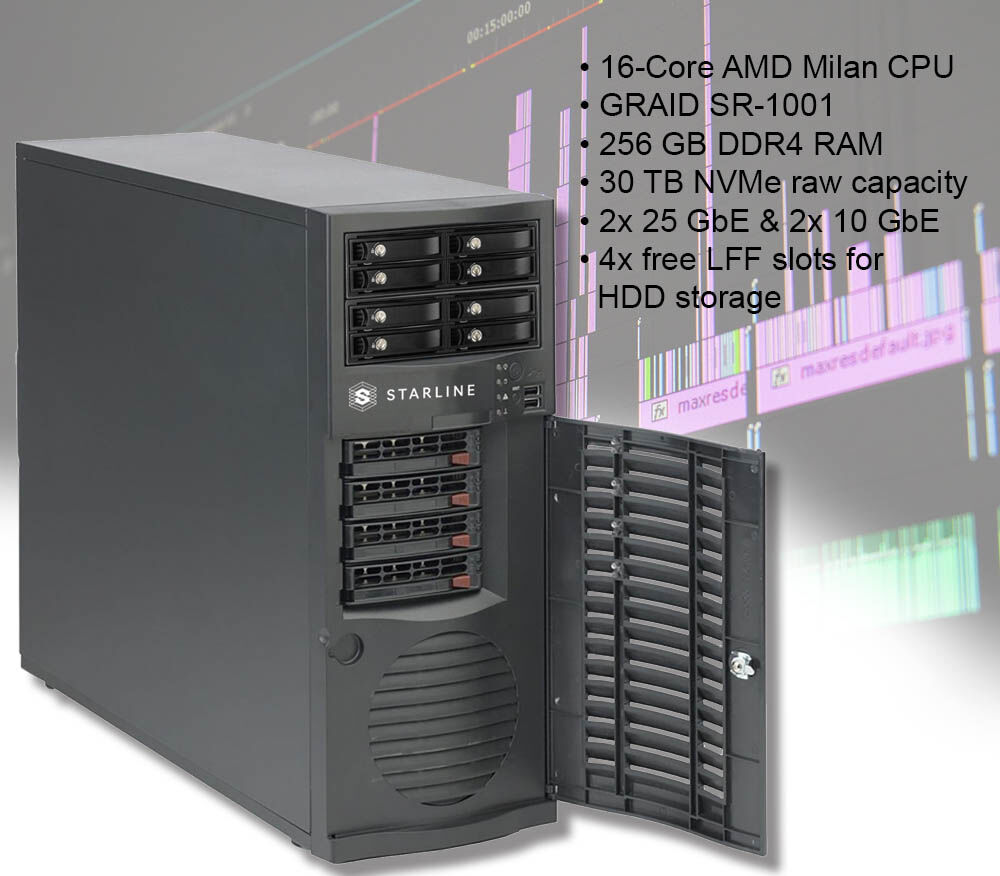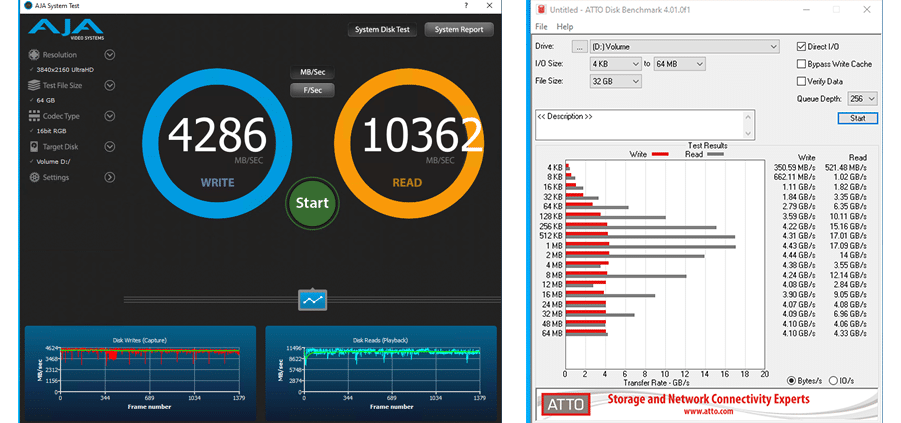Midi tower with NVMe pool and GRAID performance
A server concept for the discerning: Expandable high-end server for special tasks
GRAID booster on board
Demanding tasks require powerful hardware. That's why we have created a concept server that achieves great things on a small footprint: It provides over 30 terabytes of raw capacity on its eight built-in NVMe SSDs and also has space for a separate HDD pool.
Thanks to its high transfer rates, this central unit is particularly suitable for video post-production, editing and compositing. That's why we're also showing it at IBC 2024 in Amsterdam. But the NVMe machine also performs well in the medical sector – for example in diagnostic imaging – or in interaction with databases.

Measured performance
The GRAID card passed our internal tests in combination with just four Kioxia SSDs with flying colours (the transfer rate increases with additional SSDs): under RAID5, the server achieved a read data rate of over 10 GB/s (AJA System Test, left screenshot). Depending on the I/O size, the ATTO Disk Benchmark was even able to measure 17 GB/s in read mode.

Platforms for GRAID servers
OS Support:
AlmaLinux, CentOS, Debian, openSUSE Leap, Oracle Linux, SLES, RHEL, Rocky Linux, Ubuntu, Windows Server 2019/2022, Windows 11
Virtualisation environments:
KVM, Proxmox VE, Virtuozzo, OpenVZ, Windows Server Hyper-V
GRAID SupremeRAID SR-1001: A new era of server technology
One of the most advanced technologies in NVMe RAID is the SupremeRAID SR-1001, a GPU-based RAID card that sets new standards for performance and efficiency. Unlike conventional RAID cards, the SR-1001 utilises the massive parallel processing power of GPUs.
This leads to a drastic reduction in latency times and a significant increase in throughput rates. The SupremeRAID SR-1001 can process several million IOPS (Input/Output Operations Per Second), ensuring that even the most demanding applications in modern data centres are supported.
